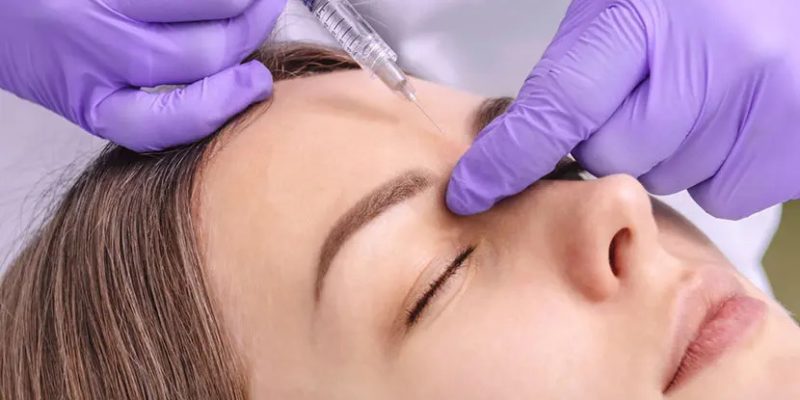Botox for Eye Conditions
By Reena Mukamal for the American Academy of Ophthalmology Sep. 19, 2023
Botox® (botulinum toxin A) is no stranger to the eyes. You’ve heard of Botox as a treatment for crow’s feet and wrinkles. But did you know the drug was originally developed by an ophthalmologist in the 1970s? Today it is used as a medical therapy for more than half a dozen eye conditions.
What is Botox?
Botox actually comes from the same toxin that can cause paralysis (botulism) when ingested in contaminated food. When it is injected in small, safe doses into targeted areas, Botox blocks signals between nerves and muscles. Normally your brain sends a message to your muscles to contract and move. By preventing the transmission of this message, Botox can help keep a muscle relaxed.
How Long Does Botox Last?
The drug usually begins working within one to three days of injection and the peak effects are seen after 7 to 14 days. The effects last for three or four months before wearing off, depending on the individual, type of Botox and dose. Repeated injections are often needed for patients to continue experiencing the effects.
Types of Botox
Several formulations of Botulinum toxin are FDA approved. These formulations vary in strength. Currently, only Botox and Xeomin are being used by ophthalmologists. Doctors are excited about the potential of a new, longer lasting formulation called Daxxify, though this version hasn’t yet been tested for eye conditions.
What Can Botox Treat?
Misaligned eyes (strabismus)
Botox was first approved by the FDA as a treatment for strabismus, or misaligned eyes. Injecting the drug into certain eye muscles can restore eye alignment in both children and adults. The treatment is a lower-cost alternative to surgery. In children, Botox injection requires general anesthesia. Some patients need more than one injection of Botox to maintain the effects.
Twitching eyelid or facial spasms (blepharospasm/hemifacial spasm)
Uncontrollable muscle contractions can make it difficult to open the eye and interfere with quality of life. Botox can relax the muscles that cause twitching eyelids and other involuntary facial spasms. Blepharospasm and hemifacial spasm were among the first conditions that Botox was approved by the FDA to treat.
Protection of ocular surface (chemical tarsorrhaphy)
When the cornea — the clear dome covering the eye — needs protection or healing, ophthalmologists can stitch together the upper and lower eyelids to keep the eye closed. This surgery, called tarsorrhaphy, can be disfiguring and cause scarring. But a small injection of Botox into the muscle that controls the upper eyelid will allow the eye to gently close within a few days and reopen on its own in two to three months. Your ophthalmologist and corneal specialist can determine if this procedure may be an option for you.
Facial paralysis (Bell’s palsy)
Bell’s palsy
is a nerve problem that results in partial paralysis of muscles on one
side of the face. The condition can prevent you from blinking or closing
the eyelid. Over time, this can lead to infection and damage to the
front of the eye.
“The vast majority of patients with Bell’s
palsy get better over time as damaged nerves heal,” says ophthalmologist
and Academy member Andrea Tooley, MD, an oculofacial plastic surgeon.
“Botox can provide a gentle way to temporarily close the eye and protect
the ocular surface while nerve function corrects.”
Refractory filamentary keratitis
This disease causes small filaments made up of dead cells to form on the cornea. Refractory filamentary keratitis can affect people with an ocular surface disease such as dry eye, and can cause pain or a feeling of something being stuck in the eye. Although ophthalmologists can remove the filaments and prescribe extra lubrication, that doesn’t always resolve the problem. Botox can provide longer relief.
Excessive tearing (epiphora)
Botox can provide some relief when the eyes make too many tears over a long period of time, or an obstruction stops tears from draining away from your eyes. Though surgery can provide an ultimate fix for a blockage, it may not be a safe option for every patient. Botox can offer symptom relief for people who are waiting to have surgery.
Eyelids that turn in (entropion)
A condition called entropion can cause the eyelashes to repeatedly rub against the front of the eye, damaging the cornea. Botox can relieve this problem by relaxing certain muscles and repositioning the eyelid. Botox may be a good option for patients who are unable to have surgery, or have to wait a long time for their surgical appointment. Some people prefer Botox to the alternative treatments for entropion, which include bandaged contact lenses and eyelid taping.
Is Botox Safe?
Experts agree that Botox is relatively safe. Complications from Botox injections are rare and temporary. The most common side effect is an unwanted droopy eyelid, which occurs in a fraction of people with epiphora, according to Dr. Tooley. “If this happens, we can give special eye drops to reverse the droop or it tends to go away on its own in about a month,” Dr. Tooley explained.
Botox therapy is not advised for certain people, including those who:
- are pregnant or breastfeeding
- have myasthenia gravis
- are taking aminoglycoside antibiotics
Does Botox Hurt?
The needles used for Botox injections are very small, so pain is minimal. Your ophthalmologist may numb the area with topical anesthetic first. Some redness or bruising may occur at the injection site and disappear within a few days.
Is Botox Covered by Insurance?
Medical Botox injections for FDA-approved uses are likely to be covered by your insurance. Botox for refractory filamentary keratitis and excessive tearing are off-label uses, and patients can expect to pay out of pocket for each treatment, several times per year.

